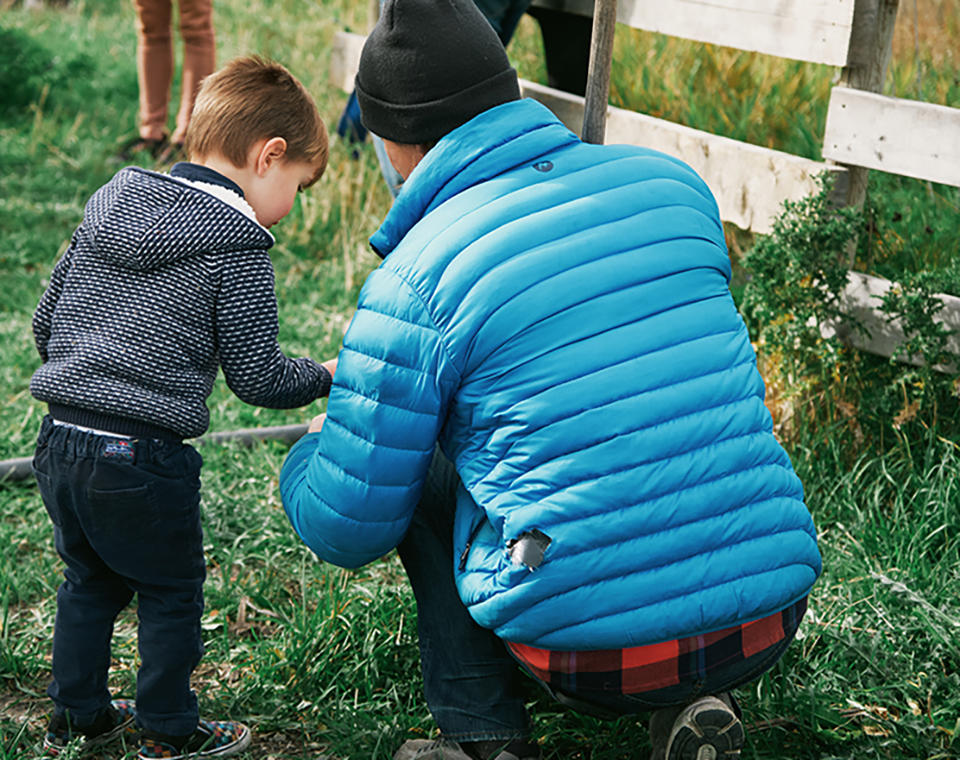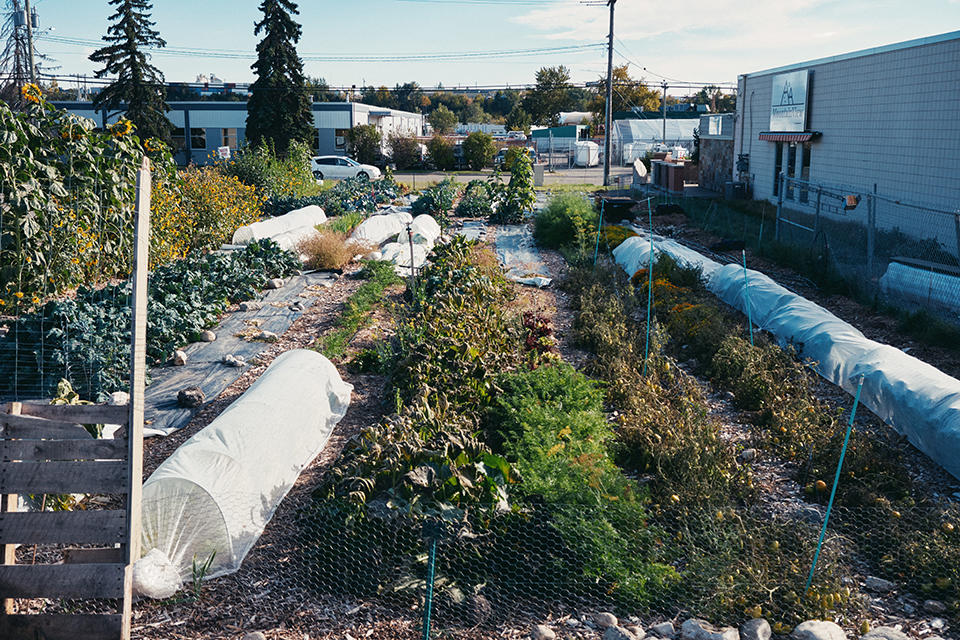An estimated 4.4 million Canadians live with food insecurity, forced to make tough decisions between paying rent or buying food. But the solution isn’t as simple as reducing food prices, because many farmers and food producers are also struggling to make ends meet. Marit Rosol is Canada Research Chair in Global Urban Studies and a professor in the Department of Geography at the University of Calgary. She says to solve the problem, we need to both raise incomes and promote alternative ways of producing and distributing food.
“Food is such a wonderful way to connect people,” says Rosol. “But we need to better understand how it’s all connected — and why both ends of the food chain are having difficulty.”
What is food insecurity?

Rod Olson, a founding member of the YYC Growers and Distributors cooperative, and his son, examine a plant near the irrigation pond at Happiness by the Acre farm.
Logan Bryce Photography, for SSHRC
Food insecurity is more than not having enough food. It also means missing out on meals with friends or having to compromise on quality, buying whatever’s cheapest rather than choosing based on preferences or nutritional value. The resulting poor diet and reduced participation in social life can have a negative impact on physical and mental health. But simply giving away food (through food banks, for example) doesn’t solve the root problem, which is a lack of income.
Food insecurity is also linked to housing insecurity. As housing costs rise, people have to devote larger shares of their incomes to rent or mortgage payments, leaving less money available for food (which currently also costs more due to pandemic-related supply chain issues and labour challenges).
On the other end of the food chain, the set-up of our food distribution system leaves food producers with razor-thin or non-existent margins that can’t sustain any further decreases in farmgate prices.
Rosol says this system is itself a large part of the problem: “All the power lies with the big distributors in the middle who dictate prices to both producers and consumers.”
Examining alternative food systems
Part of Rosol’s research looks at alternative food systems and economies in Canada and Germany to identify those that could make a real difference.
“To create truly alternative economies, you have to look at different ways of organizing food production, other forms of financing and land tenureship,” she says.

An urban farm plot in Calgary Alberta. Dirt Boys, a member of the YYC Growers and Distributors cooperative, makes use of underutilized urban spaces to provide local produce to city residents.
Logan Bryce Photography, for SSHRC
To find out what works and what could be scaled up or adapted, Rosol interviews people involved with alternative food initiatives, including farmers, distributors, community organizations and policy-makers. One such initiative is a German co-op working to help get new people into farming by raising money to buy land, then leasing it long-term to organic farmers at reasonable rates.
Other projects are experimenting with different models of community-supported agriculture. For example, one German co-op is buying weekly from farmers and taking charge of distribution, leveraging bulk pricing and volunteer labour to make good food accessible to more people. In another case, a group of farmers in the Calgary region is banding together to offer a weekly harvest box directly to consumers, with more variety of produce than they could deliver individually.
Solving food insecurity is a collective effort

Merit Rosol
Riley Brant, University of Calgary
Based on her research, Rosol says eliminating food insecurity requires three critical components:
- We need to rethink the entire food system. Small changes to just one part of the food system won’t fix things. We need to consider not only food sources and distribution methods, but also the underlying economic models.
- Rural-urban relationships are critical. Rural and urban communities have become increasingly disconnected from each other. Finding ways to bring them back together and create more sustainable, localized food economies would benefit consumers and producers.
- It’s a problem that demands solutions at all scales. Local grassroots efforts are critical, but they’re not sufficient. Real solutions will require complementary action from governments at all levels, including national and international policy changes in areas beyond the food system, such as housing, wages and trade.
While there is no quick fix for eradicating food insecurity, Rosol is optimistic.
“There’s a lot of passion around food today,” she says. “People want to make changes, so I hope my work helps them better understand how it’s all connected and what has to happen.”
Creating a more sustainable and just food system: 3 critical ingredients - UCalgary News
Read More

No comments:
Post a Comment